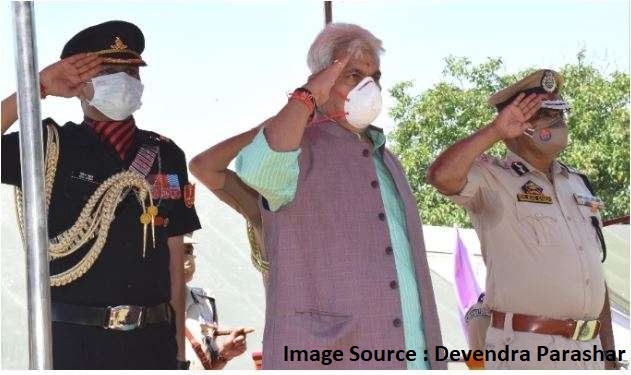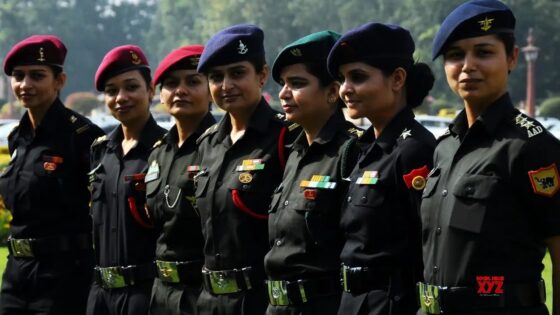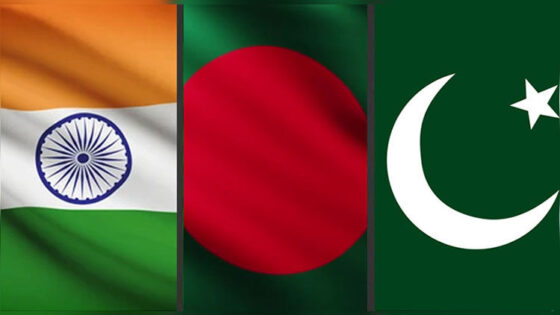Now that Jammu and Kashmir has got a new Lieutenant Governor – a seasoned politician, unlike his bureaucrat predecessor – one expects that he will start the much-needed political outreach programme to break the UT’s political deadlock, writes Touseef Raina.
Besides being world-famous for the Royal Bengal tigers, the Sundarbans mangrove forest – located in the eastern state of West Bengal – is also noted for the wild beehives. The people in and around the forests of Sundarbans collect the honey from these beehives and sell it in the urban markets. It does not fetch them a fortune but the income – if and only if they do not get killed as they are supposed to cheat death in the face of deadly tiger attacks – is just enough to make ends meet.
About fifty honey gatherers die on average each year in tiger attacks in Sundarbans forest, as per records collected by economist Amartya Sen. He points out, while the tigers are protected by law, “Nothing protects the human beings who manage to eke out a living by risking their lives in the forest.” Sen drive home the point that in the third world countries, “If poverty drives human beings to take such terrible risks – and perhaps to die horrible deaths – for a dollar or two of honey, it might well be odd to concentrate on their liberty and political freedoms,” he says this while arguing that fulfilling the economic needs must be prioritized – “even if it involves compromising political liberties”, as focusing on democracy and political liberty is a “luxury” that the poor “cannot afford”.
What do Sundarbans and Jammu and Kashmir have in common? Economic instability
First the developments of August 5th, and now the Covid-19 pandemic, has stalled the economic activity in Jammu and Kashmir and nobody bats an eyelid, neither here nor in New Delhi. Those who have the power and influence to change the situation for the better are busy playing politics as the people of the UT, like in Sunderbans, continue to bear the brunt of economic instability.
This problem goes deeper —there’s more to it than meets the eye. Jammu and Kashmir has lakhs of unemployed youth — educated, uneducated, skilled and unskilled — with no avenues of sustainable employment opportunities in sight. The dilapidated condition of roads and streets is a common sight in most parts of the Union Territory. Access to safe drinking water has become a grave problem for Kashmir, especially in rural areas. Languishing and incomplete developmental projects are deflating the tall claims of development in Jammu and Kashmir.
Tons of fruits are left to rot for want of proper marketing opportunities. Wular Lake, Dal Lake and Anchar Lake are dying in absence of conservation and preservation policies. Young and old are suffering from stress and anxiety disorders; and above all, the former are falling victim to narcotic and psychotropic drugs. The aforementioned issues, proposing a wide gap in economic development indicators, barely get any attention in terms of policy priority, whereas the national security imperatives, issues of democracy and political liberty get disproportionate attention.
Social science research establishes a deep connection between development and peace as it relates all the standard indicators of economic development with peace. Research studies conducted on the causes of civil unrest find a strong connection between the lack of meaningful economic activity and the likelihood of armed conflict. Economist Edward Miguel describes this link as “one of the most robust empirical relationships in the economic literature.”
Paul Collier and his colleagues argue that the risk of civil war is strongly associated with joblessness, poverty and a general lack of development. “The key root cause of conflict is the failure of economic development” which also means that rising economic growth rates and levels of per capita income may be “the single most important step that can be taken” to reduce the likelihood of armed conflict.
Inequality matters greatly, especially horizontal differences in wealth and power between social groups, as Frances Stewart and her colleagues have demonstrated. Research shows that the risk of conflict is greatest “when social identity groups are excluded from political power and when their relative wealth is far below that of other groups.” Political exclusion and significant economic disparities increase the likelihood of civil conflict.
Appointment of new Lt Governor: A shift from bureaucratic approach to a political one
The BJP-led government at the Centre may take pride in having accomplished its long-standing political aim of stripping J&K of its special status and splitting it into two Union Territories, but in the process it has taken away people’s agency to elect their representatives, that remains its biggest failure. A political vacuum, presided over by a Lieutenant Governor for the past year with the help of an all-powerful bureaucracy that has little connection with people, “is a recipe for worsening the situation in Kashmir,” warns Indian Express.
On August 5, there was a sudden change of guard in Jammu and Kashmir Raj Bhawan with the first Lieutenant Governor of J&K UT, a career bureaucrat, tendering his resignation and Manoj Sinha, a seasoned politician, being appointed in his place. However, there was a lack of a “public interest” element in the development based on the factor that as long as the politics or for that matter political developments concerning Jammu and Kashmir are remotely controlled from somewhere else, it will only amplify the State-citizen trust deficit. On top of that, why would people react over a development in which they neither have any say nor stake?
The political vacuum created by the developments of the past one year including changes in J&K’s constitutional status, absence of democratic political processes, the collapse of the PDP-BJP government in 2018, and subsequent dissolution of the Assembly, has exacerbated the disconnect and trust-deficit.
In the absence of a legislative policy-making approach, the erstwhile state is being ruled by the bureaucrats and the so-called development plans for the UT have been confined to the PowerPoint presentations and press releases. Now that Jammu and Kashmir has got a new Lieutenant Governor – a seasoned politician, unlike his bureaucrat predecessor – one expects that he will start the much-needed political outreach programme to break the UT’s political deadlock.
Manoj Sinha has talked about initiating a “direct dialogue” with the people and “prioritizing development and corruption-free governance” in J&K. Without setting on an over-ambitious plan, Sinha will have to — first and foremost — bridge the communication gap between people and the government. Secondly, he has to bring the developmental projects to completion, announced by the Centre at the time of the revocation of J&K’s special status. This will justify the link, established by the Centre, between development and Article 370 abrogation. Both these steps need to be taken in a phased manner and the sooner the better. Otherwise, people have a good reason to be skeptical as they have heard such statements in the past as well and not much has changed on the ground.
Recommendations
- Combining efforts of dialogue and reconciliation with social and economic investments will reduce political and economic inequalities alongside building trust between the State and the people.
- There is a need for striking the right balance between political freedoms and economic needs.
- The revival of economic activities together should go hand in hand with an effort to ensure that political liberties and civil rights are given paramount importance to retain public trust.
- The government should begin to restore the democratic processes such as the release of all political prisoners, the revival of freedom of assembly, and freedom of speech.
- The restoration of high-speed internet would serve as the first step to Confidence-Building Measures (CBMs). It will also ensure the revival of economic activities and public discourse.
References:
1. Development as Freedom by Amartya Sen – Chapter -six; Pages: 146, 147 Random House, INC, New York, 1999
2. https://indianexpress.com/article/opinion/editorials/jk-lieutenant-governor-g-c-murmu-resignation-6543096/
3. Linking Development and Peace – the empirical evidence
4. David Cortright, Peace Policy; May 18, 2016
5. https://peacepolicy.nd.edu/2016/05/18/linking-development-and-peace-the-empirical-evidence/
6. The National Bureau of Economic Research
7. NBER Reporter 2011 Number 3: Research Summary
8. Economic Shocks, Weather, and Civil War
9. Edward Miguel https://www.nber.org/reporter/2011number3/miguel.html
10. Horizontal Inequalities and Conflict: Understanding Group Violence in Multiethnic Societies
11. Dr. Edward C. Luck, Senior Vice President and Director of Studies, International Peace Institute
12. Dr. Frances Stewart, Director, Centre for Research on Inequality, Human Security and Ethnicity (CRISE), Oxford University
13. H.E. Mr. Peter Maurer, Permanent Representative of Switzerland to the United Nations
14. Dr. Susan L. Woodward, Professor of Political Science, Graduate Center at the City University of New York (CUNY)
15. https://www.ipinst.org/wpcontent/uploads/2010/01/pdfs_transcript_stewart_01-18.pdf
–Views are personal.[/vc_column_text][/vc_column][/vc_row]





